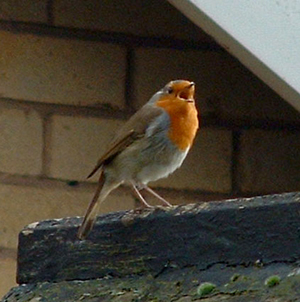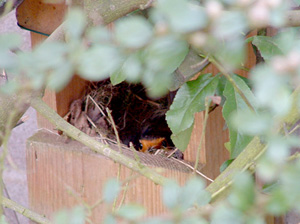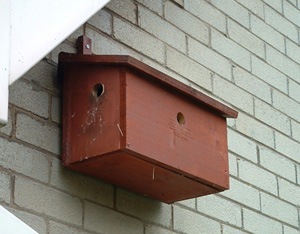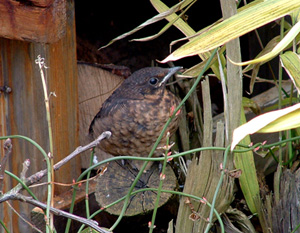Wildlife gardening - Birds
Things you can do to help birds in the garden

Like us, birds need food, water, shelter and somewhere safe to nest. Making the garden wildlife friendly will encourage them to come to your garden to look for food and nesting places. As well as being fascinating to watch, birds help to keep a garden clean of pests.
Food and water
In the cold winter months, the food you put out for the birds can save their lives as many birds can die of cold and hunger in winter if they can't find enough to eat. Put out food that is high in fats and oils, such as sunflower seeds, peanuts (but not salted ones), mild grated cheese and fat balls. These will give the birds the energy they need to keep warm. During the nesting season, birds will appreciate tinned dog food.
In spring you can also put out live meal worms which are very good for feeding to nestlings - once the birds discover them, they'll be taken in minutes. Meal worms are quite dry and not unpleasant to handle.
Always make sure there is a supply of fresh water. Birds need to drink morning and night and many, like robins, bathe themselves all year round - check the water every morning and replace it if it is frozen or dirty.
The water supply for the birds can be as simple as a plant pot saucer so you don't need to have a pond.
Shelter and nesting places
As well as having plenty of thick shrubs that birds can shelter in, put up some nesting boxes for them. An east, west or north facing wall is best, or the box may get too hot.
Make sure it is placed high up enough so that cats can't get to it, and away from areas that are busy.
When birds are nesting, try to stay away from the nest as much as you can so that you don't disturb them. This robin was photographed from an upstairs window using a zoom lens.
Robins like open-fronted nest boxes, like the one in the picture.

Nesting robin

Sparrow terrace
Sparrows like to live in groups and will happily use a sparrow 'terrace'.
This one has three units so that three families can nest in a row. It is on a north facing wall and the sparrows started using it within a few days of it going up.
You can buy sparrow terraces or make your own.
Collect dried grass and moss and leave it out for the birds to collect for nesting material.
Young birds in the garden
If you are lucky, birds will nest in your garden and you can watch them grow up. The young blackbird in the picture has found a quiet corner to sit in - it's only been out of the nest (also called 'fledged') for three days and doesn't have tail feathers yet (I used a zoom lens for this picture).
When a garden is popular with birds, then as well as raising a family there, other adults may well bring their youngsters there for the day. They do this when they know that other birds visit and that there is plenty of cover.
As you walk about, you might find young birds under plants or sitting in shrubs. Don't worry, their parents will come back for them later. If you like, you can make sure there is food and water nearby, but otherwise try to keep out of the way.
If you have cats and dogs, try to keep them away from young birds, as the bird's feathers haven't fully grown yet so they won't be able to fly properly and can't escape.

Newly fledged blackbird
Chemicals in the garden
Birds and other beneficial insects will quickly eat many of the pests that attack plants, saving you time and money. Try to encourage all the family to avoid or reduce the use of chemicals in the garden. By not using chemicals, you are not killing the insects and caterpillars which are the birds' food. A few holes in leaves really don't matter that much, and the pest insects are good food for the birds.

© Copyright Miranda Hodgson 2007